Vanity Fair review
“Thank you writer Cassie da Costa for understanding Bad Attitude, and also being able to write. Da Costa can turn a phrase, and even better, she has an original point of view.” - Susan Stern
Bad Attitude Makes the Case for a Radical Cartoonist’s Right to Offend
Filmmaker and feminist Susan Stern’s documentary frankly and enthusiastically analyzes the life and work of her late husband, cartoonist Spain Rodriguez.
Writer Cassie da Costa
The artist Spain Rodriguez was a political radical, yet he wasn’t strictly a political cartoonist. Bad Attitude, a documentary about his life and work that premiered at this year’s Slamdance Film Festival, reckons with the man’s personal and political contradictions, and how it gave life to his work. (The film is still in talks to be picked up for distribution.) Directed and narrated by his wife, filmmaker Susan Stern, and including animations from his daughter Nora Rodriguez, the film looks at Rodriguez both within and beyond his own terms.
Rodriguez was a radical leftist who tried to reform Nazi sympathizers in the Buffalo, New York, bike gang he was part of before joining anti-war and civil rights protests in ’60s New York City. But as several of his cartoonist friends—including Trina Robbins, Art Spiegelman, R. Crumb, and Aline Kominsky-Crumb—put it in the film, he didn’t quite “get” feminism. He loved drawing lascivious, brutally dominant women with curvy and muscular bodies, and depicting feminists as man haters. Still, Kominsky-Crumb says, Rodriguez always took her work seriously. In her youth, Stern lived in a feminist separatist cooperative where men were typically not allowed. She fell in love with Rodriguez anyway—her own rebellious streak drew her to the artist, who had spent his whole life in a state of refusal.
Rodriguez grew up in Buffalo, an insouciant kid with a penchant for trouble. His family worried that his disposition would end his life, yet it instead seemed to propel Rodriguez forward. His book Cruisin’ With the Hound: The Life and Times of Fred Tooté lays brutally bare parts of his youth, which the documentary allows the film’s participants, including contemporary feminist critics Andi Zeisler and Susie Bright, to analyze. Stern also shows us drawings and writings from a dream diary Rodriguez kept later in life, while ill, which reveal softer, more sentimental renderings of his Buffalo life.
The writer Ishmael Reed, who was central to the Bay Area scene Rodriguez migrated to after his time in New York City, describes Rodriguez as both prolific and captivating in his refusal of respectability. Zeisler and Bright are honest in their delights and disturbances; Bright, especially, is excited by the sensuality of the artist’s work, while Zeisler tries to reckon the impressiveness of Rodriguez’s craft with its uglier content.
Rodriguez created plenty of socially provocative and even disturbing work that could be called chauvinist, or even trolling, while gradually becoming more open to new ideas in his personal life—presenting a twist on the old “separate the art from the artist” premise. In this case, it wasn’t the artist, but the art which raised troubling questions for some readers. Bad Attitude argues that though it’s clear Rodriguez was not a feminist, his propensity to offend wasn’t frivolous or malicious. Instead, it seemed to be his way of depicting an often bleak yet exciting world. Sometimes his drawings were critical of this world; sometimes—like in a comic where Rodriguez and a boyhood gang solicit and then attack a local gay man—they leave the reader to make sense of what has occurred.
At one point in the documentary, Rodriguez (whom Stern filmed over the course of several years, prior to the artist’s death from cancer in 2012) confesses that while he is starkly aware of the colonial violence of his Spanish ancestors, he’s not ashamed of his background. It almost sounds like a glibly reactionary statement before you remember that the “heritage” claim made by colonial and Confederate descendants usually comes with historical revisionism. Rodriguez, for whatever it’s worth, faces and even allows his own image to represent the cruelty and violence of settler colonialism. Cultural pride becomes another blunt contradiction that defines the artist’s style.
Even Rodriguez’s overtly political work—drawing posters for leftist causes—as well as his tamer commissions, including a mural for a Latino cultural arts center in the Mission, bear his wildly expressive and sensual approach. This stylistic through line doesn’t merely define his artistic voice: It maintains a vital idea about the power of keen, unflinching, and flagrant observation. Collaborating with their daughter, Nora, to reveal the complexities of her late husband’s life and work, Stern makes another compelling argument: Differing perspectives can do more than coexist; they can encourage each other.
